
The Breed History
European guarding and herding dogs were used to develop this
ancient breed. Originally called Smooth Haired Pinschers, these
dogs were involved in German dog breed development for the other
Pinschers and the Schnauzers. First records of the German Pinscher
were from the mid 1800s. Before the World Wars, the breed
contained the Schnauzer colors such as salt and pepper and pure
black, colors now extinct and not in the breed standard. One person
is credited for single-handedly saving the breed from extinction
in the early 1950s. He was required to outcross the remaining few
dogs at the start of his efforts in order to regenerate gene diversity.
As popularity grew in America in the 1980s, the first national breed
club was formed and the AKC accepted the breed.
Breeding for Function
An ancient breed, they are suitable for watchdog and
companionship. Considered a very vigilant watch dog, they are
suitable for experienced dog owners.
Physical Characteristics
Height at Withers: 17-20" (43-51 cm)
Weight: 25-45 lb (11-20 kg)
Coat: Coat is dense, close lying and short. Texture may be medium
to hard, and the hairs should be glossy. Fawn (Isabella) through reds,
to reds admixed with black (stag red). Richer full red is preferred
in the red coated dogs. Also see black or blue with ideally, sharply
demarcated red or tan markings. Marking distribution is specified in
the breed standard. Any white is undesirable in this breed.
Longevity: 12-14 years
Points of Conformation: Square in proportion, this medium sized
dog is well muscled. They have a blunt wedge-shaped flat skull,
cheeks are flat, stop is barely visible. High set ears are sometimes
cropped. Uncropped ears are triangular with a fold, though some
stand erect. Eyes are oval and do not protrude, and have a piercing
expression. Nose and lips are black, bite is a scissors. The neck is
arched, and no loose skin should be evident. The topline slopes
down slightly towards the rear, with a slight rise over the loin-back
is short, abdomen has moderate tuck up. Tail usually docked short
and is carried high. Moderately boned long straight limbs, front
dewclaws may be removed, round feet are small, well knuckled up
with dark nails and pads. The gait is fluid with good reach, and no
rolling.
Recognized Behavior Issues and Traits
Reported breed attributes include: Alert, active, intelligent and loves
to learn, loyal, watchful, fearless, determined, high energy. Good
endurance and vigilance, courageous when needed. Good alarm
barker, but not an excessive barker. Strong chase drive. Obedience
training is essential in order to channel a sometimes independent
nature and assertive will. Stay playful well into maturity. These
dogs may not be suited to be around young children (< 9) without
supervision. Moderately active-tend to be dominant. They do best
if given activities/work to do.
Normal Physiologic Variations
Dilute coat color is due to the homozygous recessive expression of
a mutation in the melanophilin gene (MLPH). This can predispose to
color dilution alopecia.
Drug Sensitivities
None reported.
Inherited Diseases
Hip Dysplasia: Polygenically inherited trait causing degenerative
joint disease and hip arthritis. OFA reports 0.7% affected.
Elbow Dysplasia: Polygenically inherited trait causing elbow
arthritis. OFA shows a high frequency, but too few German
Pinschers have been screened to determine an accurate frequency.
Patella Luxation: Congenital laxity of patellar ligaments causing
luxation, lameness, and later degenerative joint disease. Treated
surgically if causing clinical signs. Too few German Pinschers have
been screened to determine an accurate frequency.
von Willebrand's Disease (vWD) Type 1: Autosomal recessive
genetic disorder causing a mild bleeding syndrome, usually after
trauma or surgery. A genetic test is available, showing 17% testing
carrier.
Disease Predispositions
Cataracts: Anterior or posterior intermediate and punctate
cataracts occur in the breed. Diagnosed in 6.5% German Pinschers
undergoing ophthalmoscopic examination in one survey. Pedigree
analysis suggests recessive inheritance. Identified in 13.73% of
German Pinschers CERF examined by veterinary ophthalmologists
between 2000-2005. CERF does not recommend breeding any
German Pinscher with a cataract.
Persistent Hyperplastic Tunica Vasculosa Lentis (PHTVL):
Presents with posterior polar subcapsular cataracts and pre-retinal
glial proliferation. Diagnosed in 8.4% German Pinschers undergoing
ophthalmoscopic examination in one survey. Pedigree analysis
suggests recessive inheritance. CERF does not recommend breeding
any German Pinscher with PHTVL.
Optic Nerve Hypoplasia/Micropapilla: A congenital defect of the
optic nerve which causes blindness. CERF does not recommend
breeding any German Pinscher with the condition.
Hypothyroidism: Inherited autoimmune thyroiditis. 5.3% positive
for thyroid auto-antibodies based on testing at Michigan State
University. (Ave. for all breeds is 7.5%).
Persistent Pupillary Membranes: Strands of fetal remnant
connecting; iris to iris, cornea, lens, or involving sheets of tissue.
The later three forms can impair vision, and dogs affected with
these forms should not be bred. Identified in 3.27% of German
Pinschers CERF examined by veterinary ophthalmologists between
2000-2005.
Color Dilution Alopecia (CDA): Hair loss syndrome associated
with the dilute coat color. Starts as a gradual onset of dry, dull and
poor hair coat quality. Progresses to poor hair regrowth, follicular
papules and comedomes. Hair loss and comedome formation are
usually most severe on the trunk.
Corneal Dystrophy: Causes opacities on the surface of the cornea.
Unknown mode of inheritance. Identified in 1.96% of German
Pinschers CERF examined by veterinary ophthalmologists between
2000-2005.
Persistent Right Aortic Arch (PRAA): Eighteen young German
Pinschers in 16 litters from Germany and the Netherlands had
megaesophagus secondary to PRAA with an aberrant left subclavian
artery. Surgery is corrective. A complex mode of inheritance was
suggested.
Isolated Case Studies
XX Sex Reversal: A 5 month-old German Pinscher presented
with an enlarged clitoris. Surgery revealed a uterus, and two
histologically confirmed ovotestes. The dog had an XX karyotype,
and tested negative for the SRY gene, so a diagnosis of XX sex
reversal was offered.
Genetic Tests
Tests of Genotype: Direct test for von Willebrand's Disease (vWD)
is available from VetGen.
Tests of Phenotype: CHIC Certification: Required testing
includes CERF eye examination, hip radiographs, and genetic test
for vWD. Optional recommended test includes cardiac evaluation
(echocardiogram).
Recommend thyroid profile including autoantibodies, elbow
radiographs, and patella examination.
Miscellaneous
- Breed name synonyms: Standard Pinscher, Historical SYN:
Smooth Haired Pinscher.
- Registries: AKC, CKC, FCI, KCGB (Kennel Club of Great Britain),
ANKC (Australian National Kennel Club), NKC (National Kennel Club)
- AKC rank (year 2008): 141 (108 dogs registered)
- Breed resources: German Pinscher Club of America:
www.german-pinscher.com
German Pinscher Club (UK): www.germanpinscher.org.uk
Photo Gallery of Breed - German Pinscher - Dog Breed
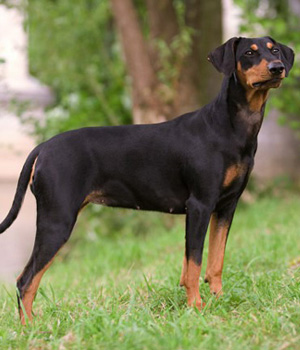
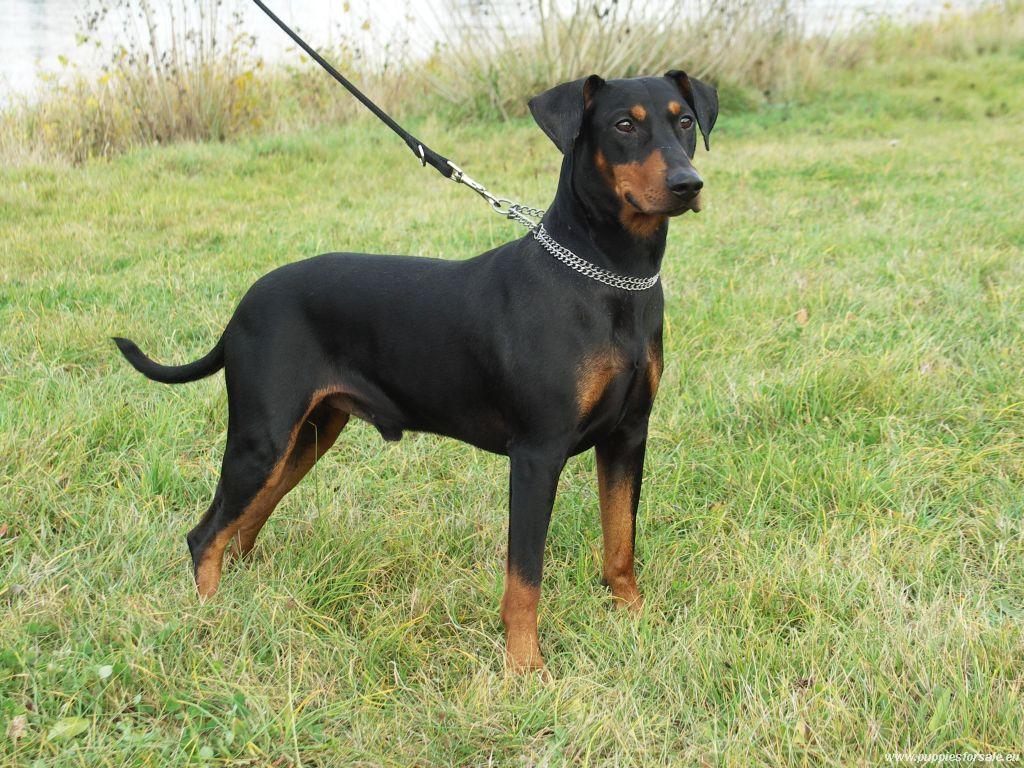
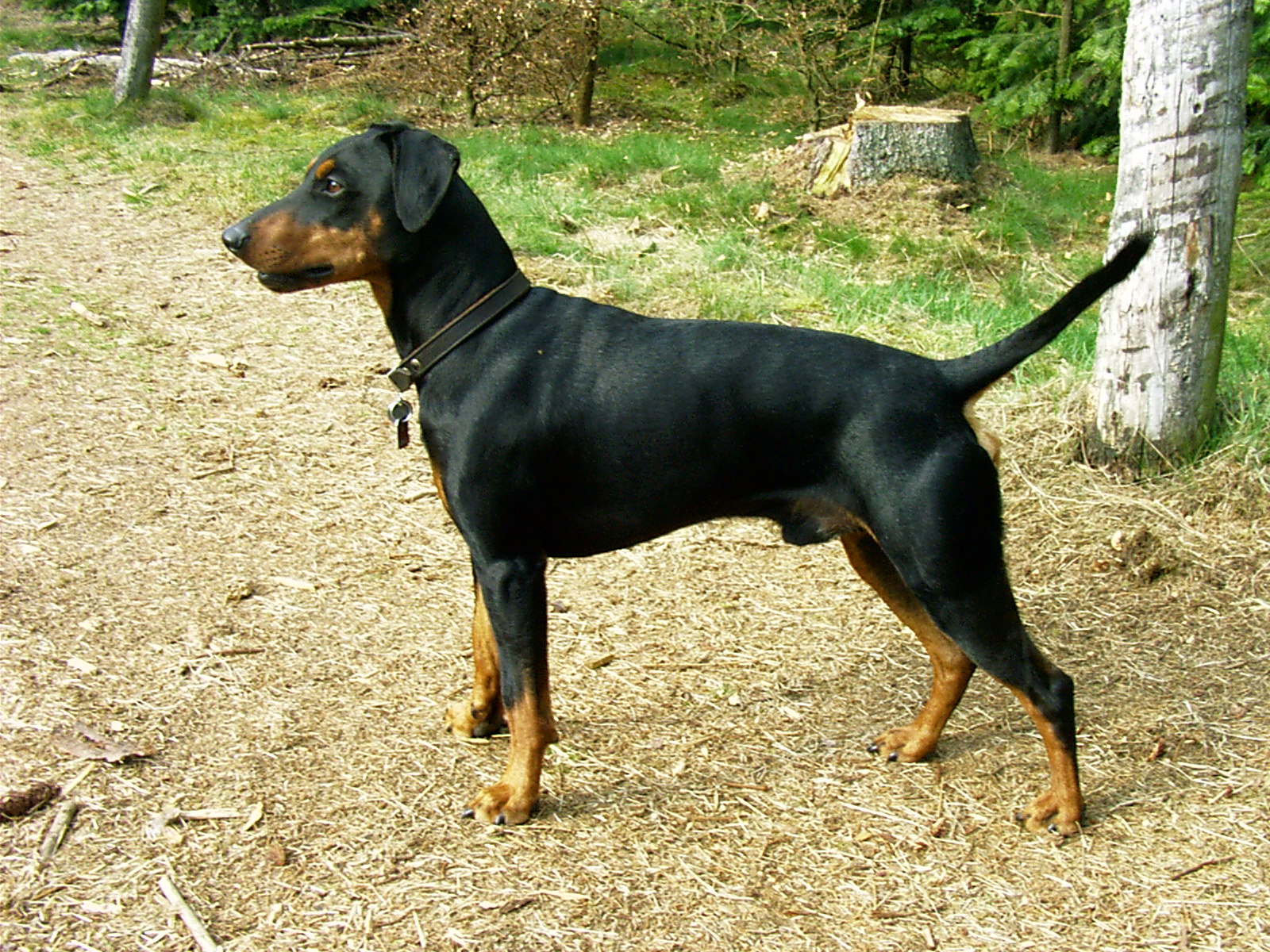
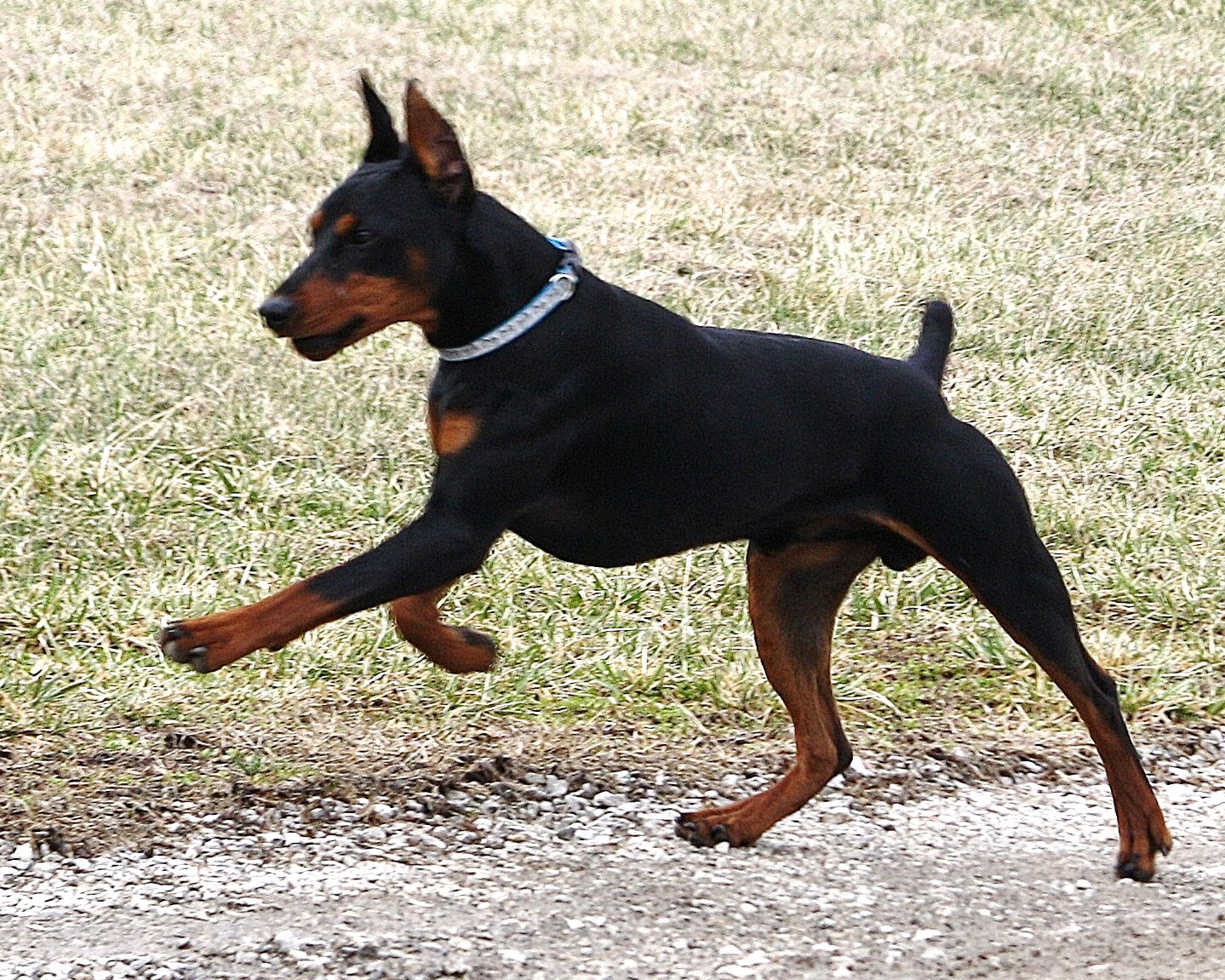


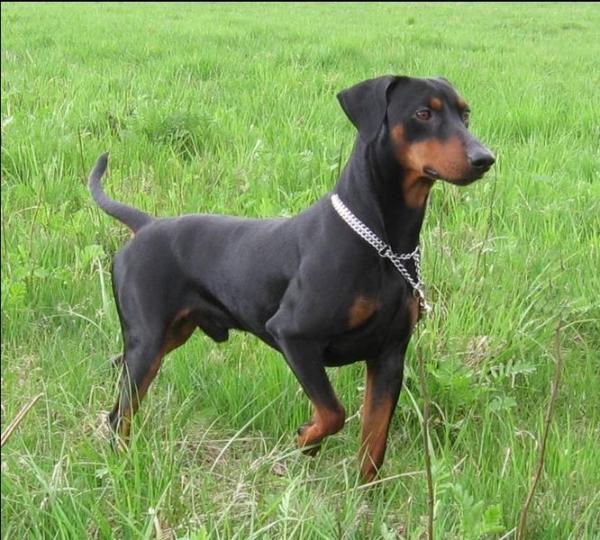
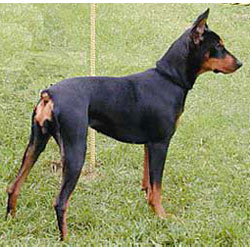
 Animalia Life
Animalia Life